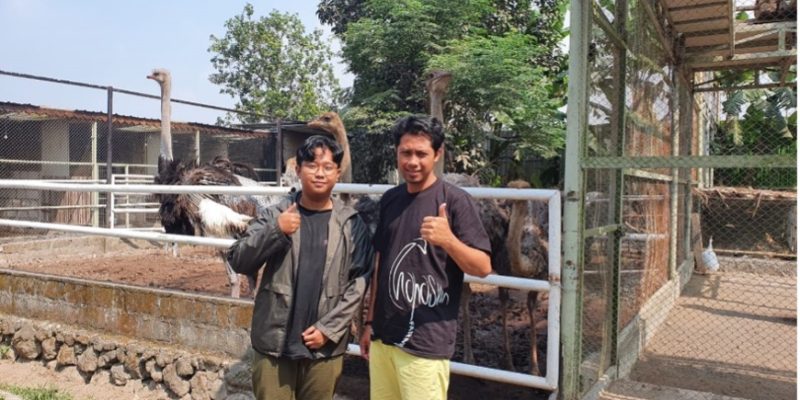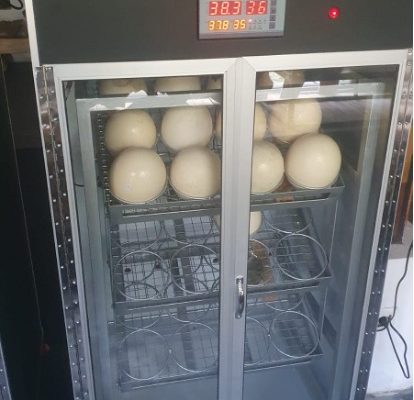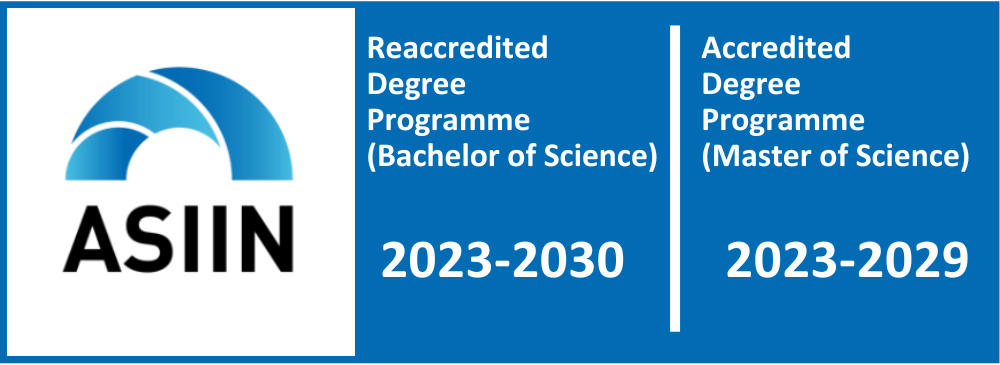In early March 2023, the Merdeka Belajar Kampus Merdeka (MBKM) – 2023 Research Team from the Faculty of Biology at UGM, led by Dr. Bambang Retnoaji, M.Sc., along with a student named Andi Muhammad Naufal Khaeri, conducted observations on the embryonic development of eggs and the feeding of Ostriches at Mahasvin Farm, Yogyakarta. The purpose of this activity was to understand the process of breeding exotic birds, particularly Ostriches, in Yogyakarta, which is located at Mahasvin Farm.
The Mahasvin Farm exotic bird breeding group is currently making efforts to hatch exotic bird eggs, including Ostriches. These efforts aim to achieve several objectives, including the conservation of exotic animals, the development of exotic wildlife tourism for the community, and, most importantly, the enhancement of educational facilities and media for wildlife development and conservation. The potential for this endeavor is significant, and they have already succeeded in hatching various types of exotic birds. However, there are currently some challenges in maintaining the embryonic development of these exotic birds.
Based on the results of discussions and observations with partners, obstacles in the Ostrich hatching process were identified, such as the imperfections in the incubator machine and the inability of the current feed to fully meet the nutritional needs. The incubator machine currently in use is unable to reach the optimal humidity levels for the development of Ostrich embryos during the incubation process. The ideal incubation temperature for Ostrich hatching is around 36°C-38°C with a relative humidity between 20% and 30% (Brassó, et al. 2020). The incubator machine lacks an egg rotation system, so egg rotation needs to be done manually by opening the incubator door, which leads to fluctuations in humidity levels affecting embryo development, resulting in suboptimal outcomes.Therefore, in May, discussions were initiated to create a new incubator with an automatic egg rotation system that can maintain stable humidity levels within the incubator, allowing for optimal Ostrich embryo development until hatching. Additionally, efforts have been made to formulate a proper feed composition to ensure the successful breeding of Ostriches at Mahasvin Farm.
Currently, the new incubator machine has been successfully manufactured and is in the final checking phase to confirm if crucial indicators during incubation, namely temperature and humidity levels, are within the desired range. Following this verification, the research will proceed to the Ostrich egg incubation process to observe the stages of Ostrich embryo development. [Author: Andi Muhammad Naufal Khaeri]




